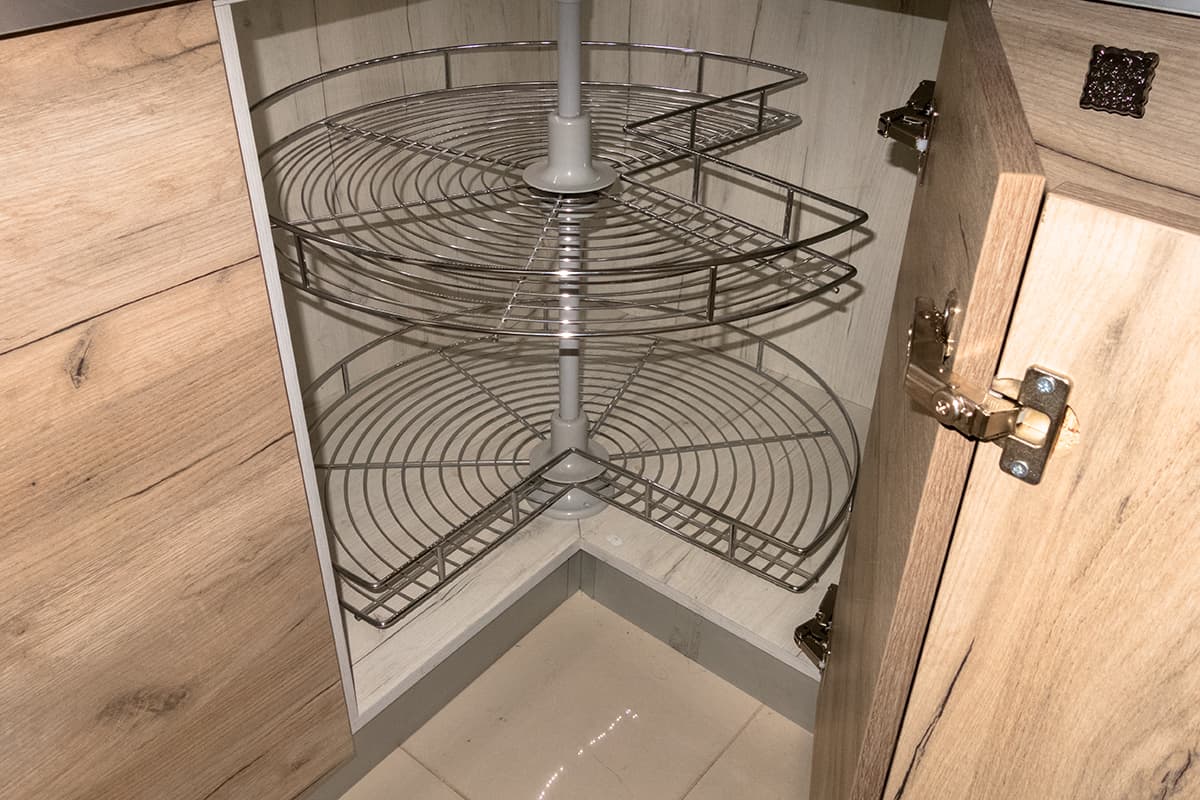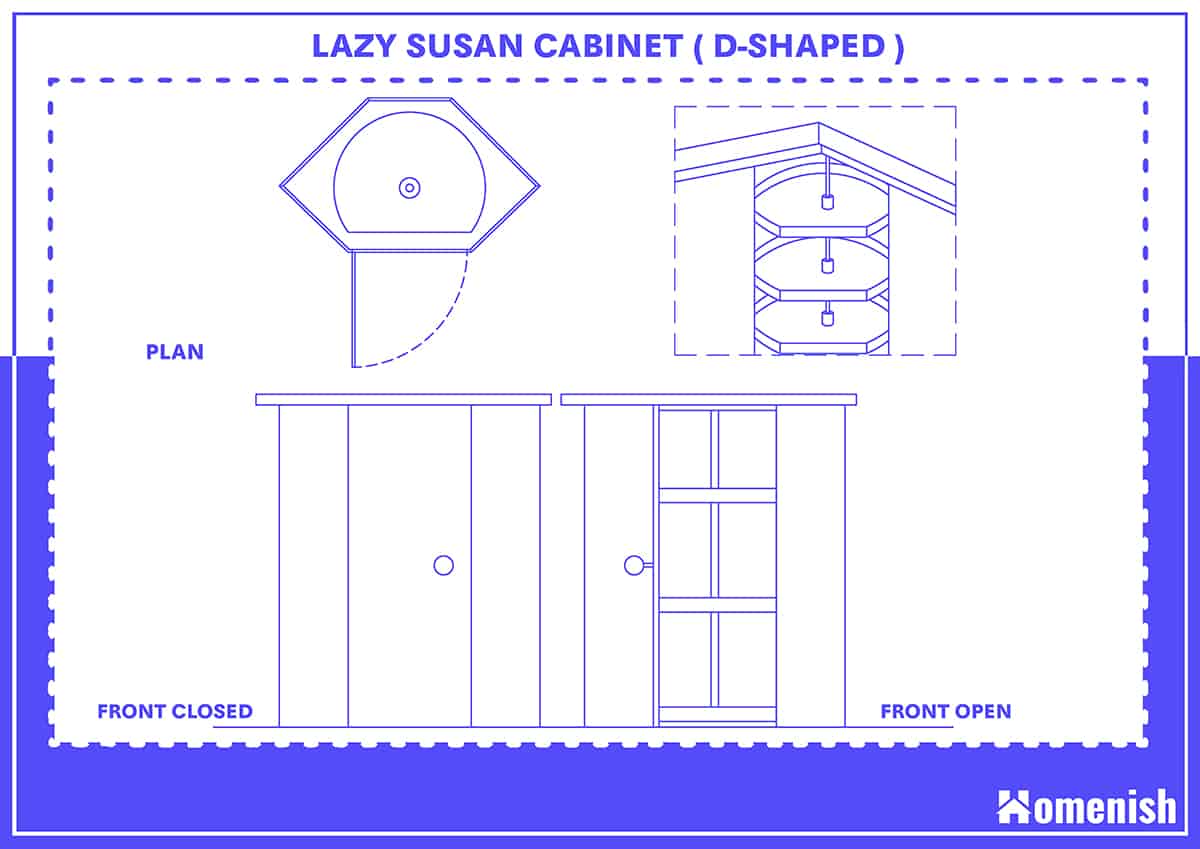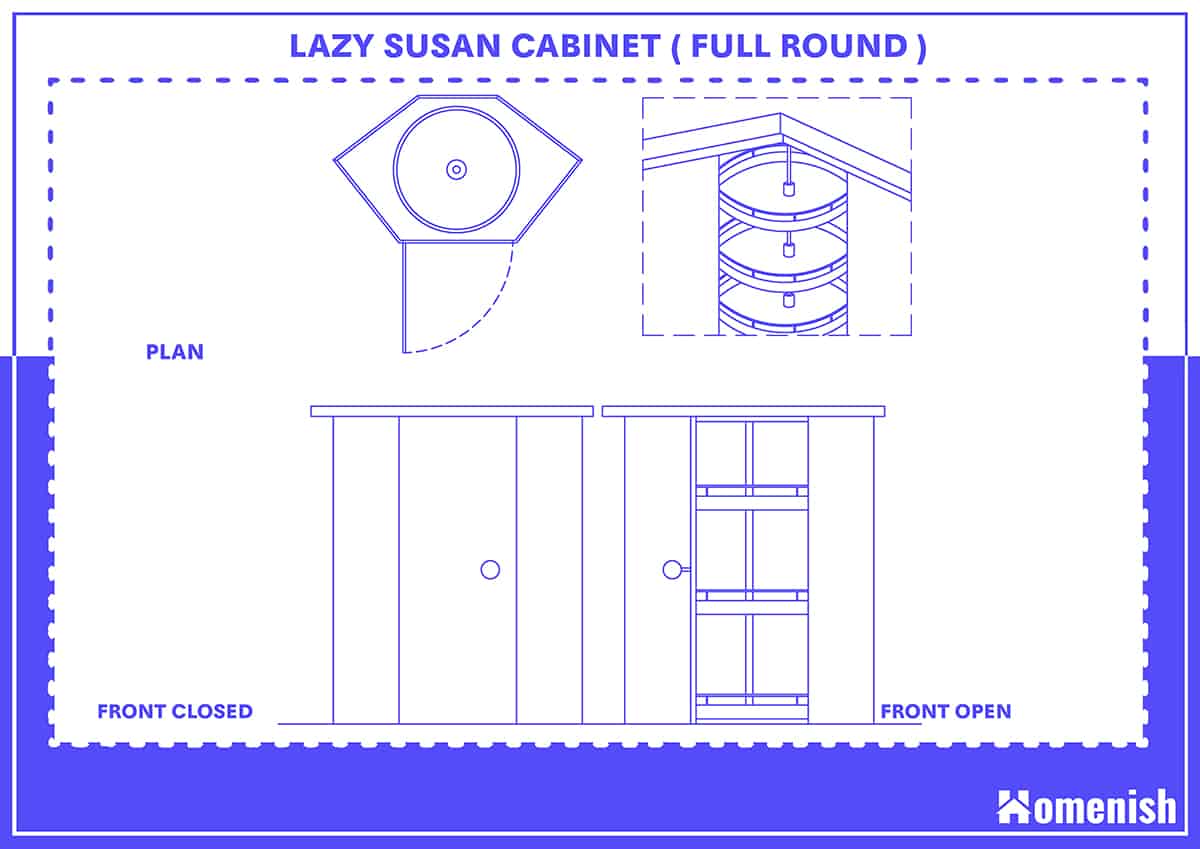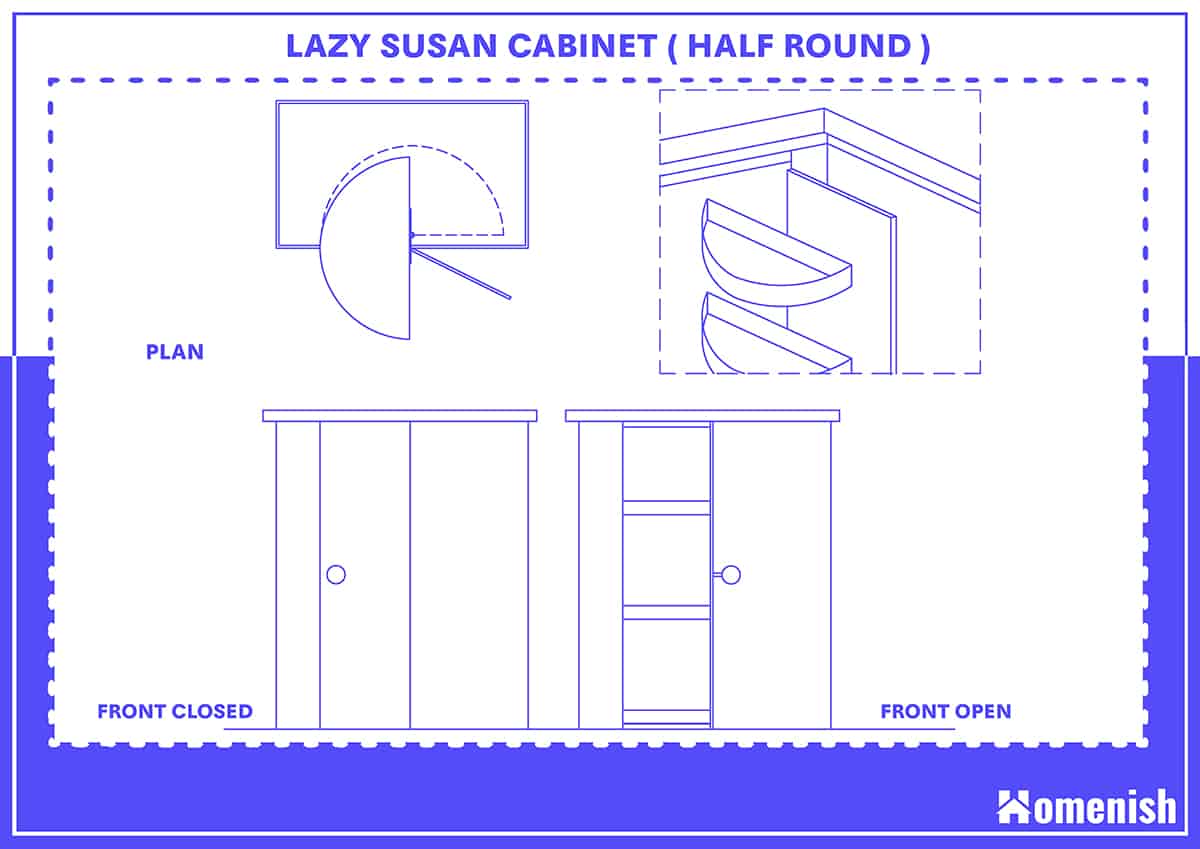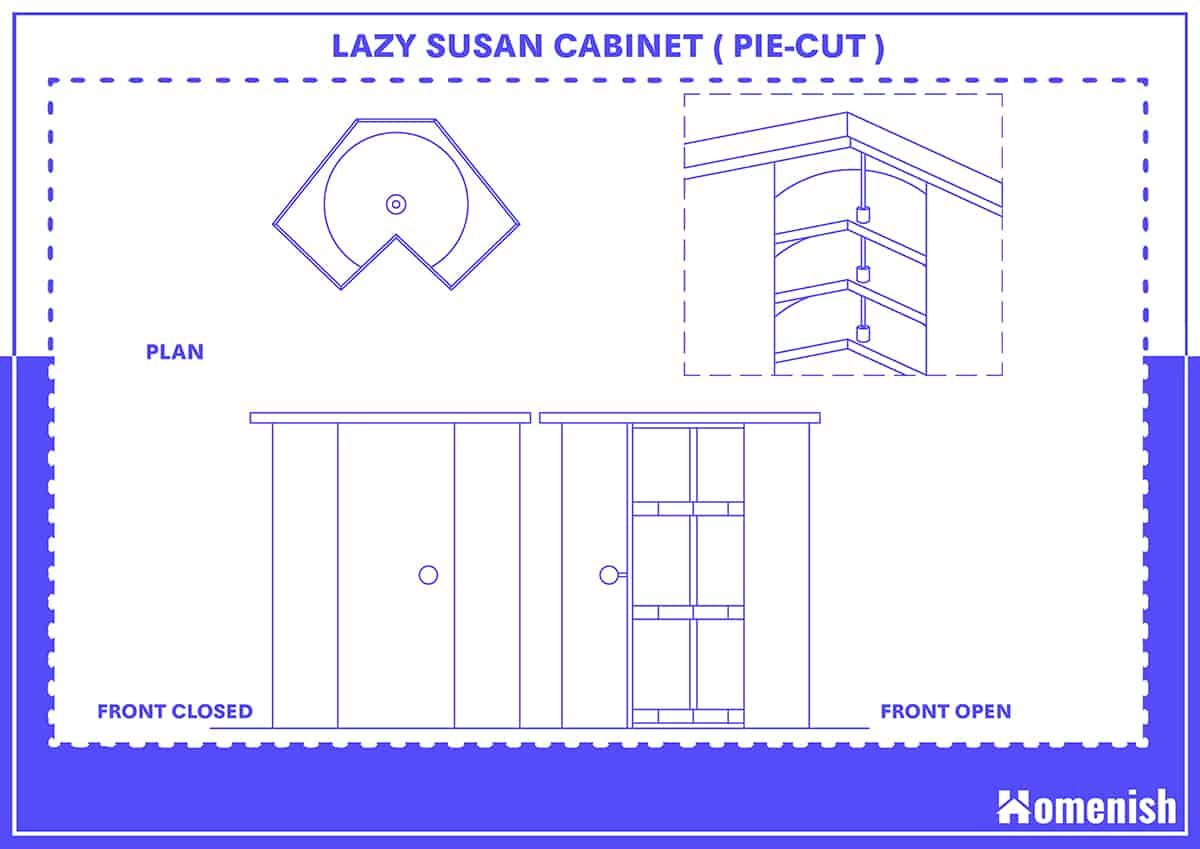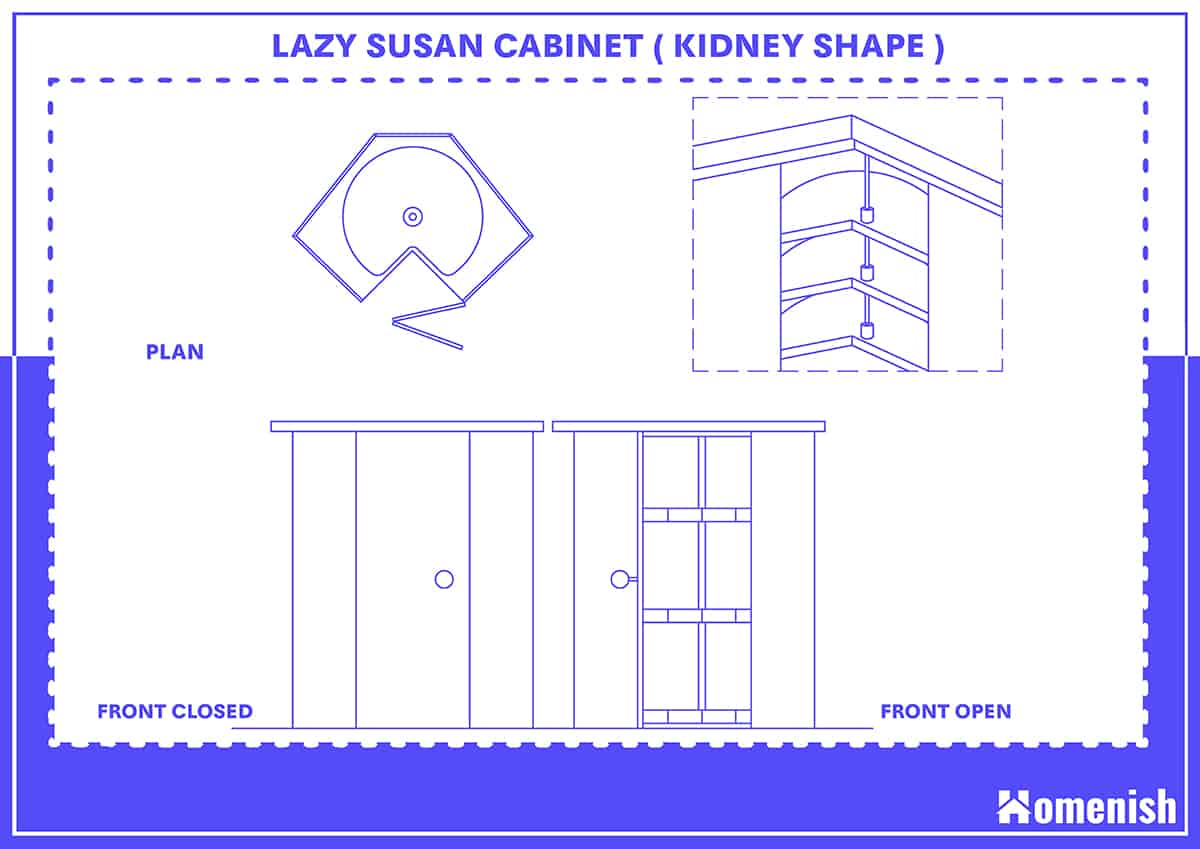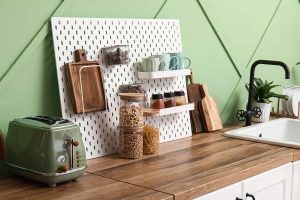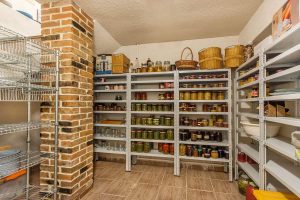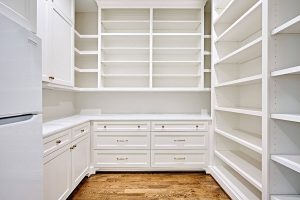Lazy Susans, also known as turntables, are a genius invention that features a rotating tray that makes for the easy distribution of food. These are popularly used on tabletops for parties or occasions where people are seated around a large table and may otherwise struggle to reach over the table to access food. However, they also present a great solution for corner kitchen cabinets which are notoriously difficult storage areas in a kitchen.
Lazy Susans can also be utilized in regular kitchen cabinets. Here we will identify the different types and sizes of Lazy Susan cabinets that can fit into corner and standard kitchen units.
Corner kitchen cabinets are often a wasted storage space in a kitchen because if they have standard shelves in them, it is very difficult to access anything at the back of the corner unit. There is also a blind spot created by the angle of corner units, which means there are parts of the shelf that you cannot even see.
A Lazy Susan creates the perfect solution to this problem, making a corner kitchen cabinet much more usable and meaning you can have better access to items you need on a regular basis.
Lazy Susan Types and Sizes
Lazy Susans are essentially rotating shelf storage systems for corner or regular kitchen cabinets, but they come in various shapes and sizes to work with standard kitchen cabinet dimensions.
When thinking about installing a Lazy Susan cabinet, sizing is the most important element to get right, as obviously, a unit that doesn’t fit in your cabinet properly will be completely useless. The width and depth measurements are what you need to pay attention to because these can differ greatly, and one inch off can result in a poorly operating shelf that won’t turn or slide.
The height is less important because Lazy Susans usually come on telescopic poles, which can be adjusted to suit the interior height of your cabinet, although these will have minimum and maximum sizes, which could be limiting in some cabinets. As well as size, there are also other aspects to consider, such as the number of shelves you want or if you would prefer metal trays instead of shelving. Think about what you are most likely to use your cabinet for, e.g., canned foods or baking supplies, and then choose the Lazy Susan accordingly.
The most widely available types of Lazy Susans for cabinets and their sizes are:
D-Shape
This shape of Lazy Susan is designed to be compatible with corner cabinets that have a door at a 45-degree angle. They typically have between three and five rotating trays or shelves and come in multiple sizes. To figure out which size of D-shaped Lazy Susan you need, you should measure horizontally across the opening frame of your corner cabinet and then subtract two inches from your measurement.
For example, if you have a corner cabinet that measures 30 inches across, then you will need a D-shaped Lazy Susan measuring 28 inches.
This size difference will allow the Lazy Susan to rotate easily without catching on to anything. You will also need to factor in the interior height measurement of your corner cabinet.
Full Round
This type of Lazy Susan looks like a multi-layered cake stand. It has a central rod that runs through the middle of full circular trays or shelves. Unlike other types of Lazy Susans for cabinets, the full round type does not attach to the interior of cabinet doors, and it does not have a cut-out shape to accommodate closing doors. This makes it a versatile choice that can work with almost any square or rectangular-shaped kitchen unit, though it is not the best choice for corner cabinets.
To find out which size of full round Lazy Susan you need, measure the interior width of your kitchen unit and subtract two inches. This is the size of Lazy Susan that will fit in your cabinet, allowing for rotating space. You should also measure the interior height of the cabinet. Lazy Susan’s of this kind are generally available in heights as tall as 62 inches.
Half Round
This is the type of Lazy Susan that is mounted to the interior door of a corner cabinet. It is shaped like a semi-circle, with a shelf that pivots forwards when the door is opened. This provides instant access to the items which are stored at the back of the cabinet, in the blind corner. The smooth movement is enabled by the use of ball bearings, which allow the shelf to glide.
These types of Lazy Susans will fit in corner cabinets that have an opening width of between 12 inches and 19 inches. When measuring for a half-round Lazy Susan, keep in mind that the cabinet opening needs to be bigger than the width of the Lazy Susan. The cabinet’s depth also needs to be bigger than the size of the Lazy Susan when measured from the front to the back.
Pie-Cut
This style of Lazy Susan is shaped like a full round type, but with a pie slice shape cut out of it to accommodate closed corner cabinet doors. The cabinet doors on this type of unit need to be inset doors, which will allow them to rotate into the interior of the cabinet. This is a handy type of Lazy Susan, but it does typically come in a maximum size of 28 inches across, which won’t maximize the storage capacity for some corner cabinets.
Kidney Shape
This is a Lazy Susan shaped like a curved kidney bean. It is very versatile because it can work with standard corner cabinet doors which are not attached, and therefore can be installed at a later date rather than needing to be planned at the time of installing your kitchen.
A kidney shape Lazy Susan and a pie cut Lazy Susans look almost alike; however, how they work are different. A kidney-shaped lazy Susan door is not attached to the cabinet while a pie-cut Lasy Suzan is attached to the cabinet. When you move the door, the pie-cut Lazy Susan itself will move while a kidney-shaped cabinet will not move.
These work with the use of rotating shelves which are mounted inside the cabinet and spin around to give the user access to items from the back of the cupboard.
